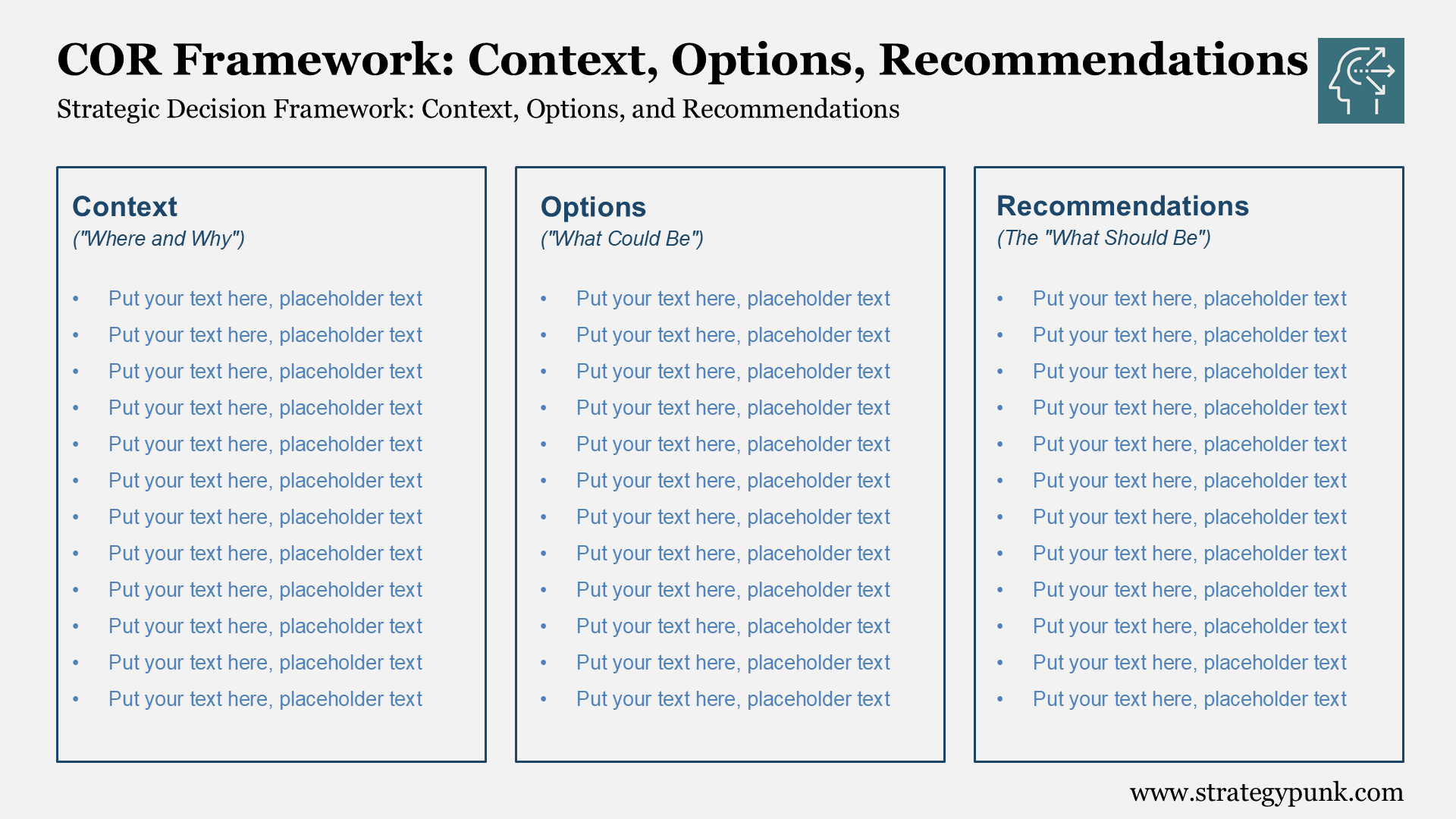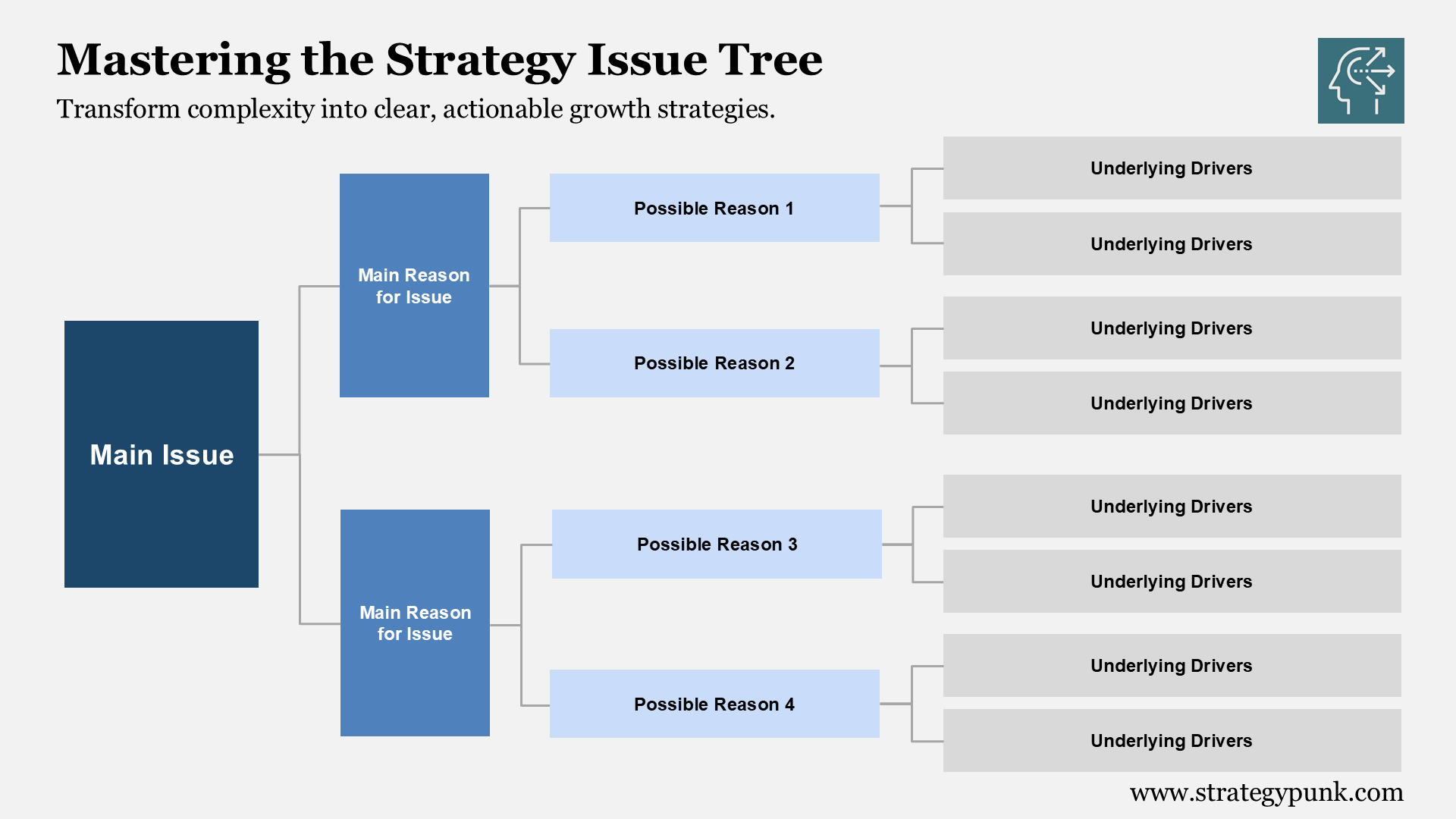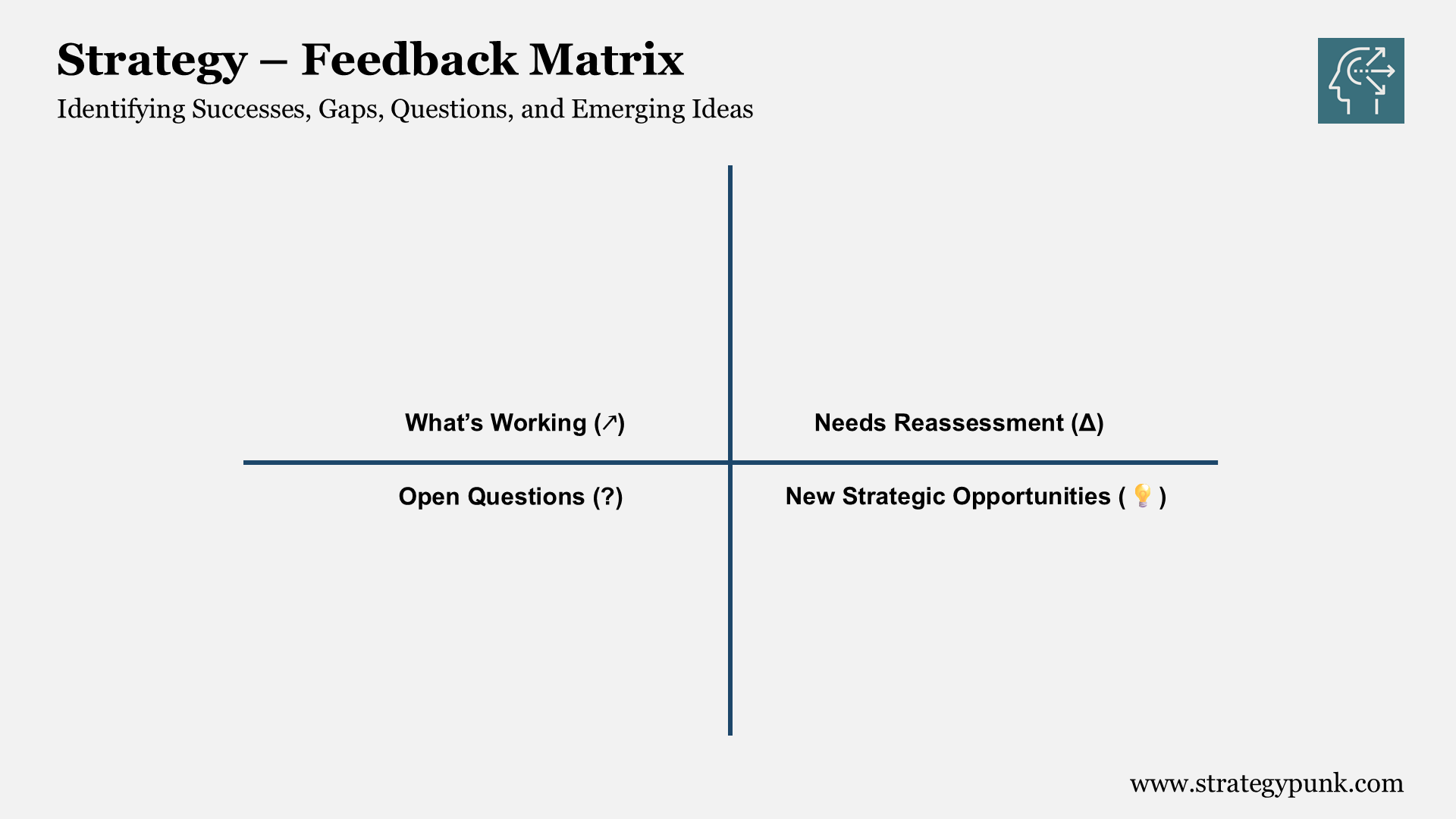The McKinsey Four-Step Masterclass in Corporate Innovation: Aspire, Activate, Execute, Extend (Free PPT)
Dive into McKinsey's revolutionary four-step innovation framework with a free, editable PowerPoint template. Learn how to Aspire, Activate, Execute, and Extend to transform your business strategies into impactful realities. Ideal for fostering a culture of continuous growth and innovation.

Introduction
Innovation is not just a buzzword; it's the lifeblood of modern businesses, crucial for growth and success.
McKinsey's recent article "Innovative Growers: A View from the Top" delves deep into what differentiates successful innovators.
The study identifies four key stages in the innovation journey: Aspire, Activate, Execute, and Extend.
Let's break these down to understand how they fuel the engine of innovation.
Download the free and fully editable PowerPoint Template.
Introduction to the McKinsey Four-Step Masterclass in Corporate Innovation

Aspire: Dreaming Big and Setting Bold Goals
Innovation begins with aspiration. Companies that excel in innovation don't just set goals; they aim for the stars. They nurture a culture where bold ideas are welcomed and encouraged.
This stage is about envisioning what could be rather than what is. It’s about initially setting lofty goals that may seem unattainable but serve as a north star for the company’s innovative efforts.
Activate: Mobilizing Resources and People
Once the aspiration is set, the next step is activation. This involves mobilizing financial, human, or technological resources to transform ideas into action.
Successful innovators understand that ideas alone aren't enough; they need the right environment and support to flourish. This step involves aligning organizational structure, culture, and resources with the innovation goals.
Execute: Turning Ideas into Reality
Execution is where the rubber meets the road. This phase involves turning those aspirational ideas into tangible products, services, or processes rigorous testing, development, and refinement.
Failures do not deter successful innovators; they view them as stepping stones to success. They blend agility and resilience, adapting quickly to challenges while staying committed to their vision.
Extend: Expanding and Evolving
The final stage, extension, is about taking and scaling successful innovations. It’s not just about making a one-hit wonder; it's about building a legacy of continuous innovation.
This involves exploring new markets, adapting innovations to different contexts, and constantly evolving to stay ahead of the curve.
These four stages—Aspire, Activate, Execute, and Extend—are steps in a cycle of continuous improvement and growth. They are the pillars that support a culture of innovation and distinguish leaders from followers in today's fast-paced business world.
Frequently Asked Questions
What is Corporate Innovation?
Corporate innovation refers to the strategic process companies use to source and implement new ideas that allow them to stay competitive and retain market share over time. It involves harmoniously merging disruptive ideas inside and outside the company into existing business models and processes.
Practical corporate innovation requires setting bold goals, empowering risk-taking, pursuing multiple growth pathways, leveraging data and advanced technologies, tapping external networks, and rapidly mobilizing to capture value from emerging innovations.
Companies that aspire to innovate, activate growth levers, execute with excellence, and extend their reach will be best positioned to adapt and continually lead their industries.
How can companies foster a culture of innovation?
Critical Elements for an Innovation Culture: Several consistent themes emerge across the sources on how companies can promote innovation:
- Leadership commitment - Innovation starts from the top, with leaders setting bold visions and goals, allocating resources, and role-modeling behaviors.1
- Psychological safety - Employees need to feel safe to take risks and share unconventional ideas without fear of failure or judgment.1
- Autonomy & empowerment - Employees closest to problems should be free to experiment with creative solutions.
- Collaboration - Innovation emerges from diverse perspectives, cross-functional teams, and internal/external networks.
- Learning & growth - Continuous skill-building, training, and access to new knowledge/ideas sparks innovation.
- Recognition - Reward and celebrate both successes AND failures to motivate innovation.
- Customer-centricity - Keep customer needs at the core of innovation efforts.
- Tools & processes - Deploy idea management systems and innovation processes while guarding against bureaucracy.
How can companies encourage employees to take risks and experiment?
Critical recommendations for companies to encourage employees to take risks and experiment:
- Lead by example. As a leader, take risks and be transparent about your successes and failures. This shows employees that risk-taking is valued and sets the tone for the culture.
- Create psychological safety. Make it clear that employees won't be punished or judged harshly for experimentation efforts that don't pan out. Focus on learnings rather than just outcomes.
- Start small. Encourage employees to take small, calculated risks on lower-stakes projects and ideas. As they gain confidence, they can take on more significant bets.
- Provide autonomy and resources. Give employees the freedom, tools, budget, and other resources to pursue new ideas. Trust their judgment while also providing mentoring.
- Highlight and reward risk-taking. Recognize both successes and failures resulting from reasoned risk-taking. Tie performance incentives and promotions to innovative outcomes.
- Accept and learn from failure. Treat failures as learning opportunities rather than something to be ashamed of. Analyze what went wrong and share lessons across the organization.
- Role model the desired mindset. As a leader, take intelligent risks, pivot quickly when things don't pan out, and maintain an entrepreneurial spirit. This motivates others to do the same.
The key is to make risk-taking and experimentation an integral, celebrated part of the culture rather than something that lives on the fringes. This starts at the leadership level but ultimately must permeate all teams.
What are some challenges companies face when implementing corporate innovation initiatives?
The key challenges companies face when implementing corporate innovation initiatives:
- Lack of innovation strategy - Not having a clear innovation strategy aligned with business goals leads to misguided efforts and wasted resources.
- Poor collaboration - Silos between teams and functions, lack of partnerships externally, and not engaging frontline staff hinders idea sharing.
- Weak innovation culture: Risk aversion, fear of failure, inertia, and a lack of empowerment impede creativity and experimentation.
- Insufficient resources - Lack of funding, time, skills, and capabilities constrains innovation efforts.
- Resistance to change - Employees cling to the status quo and oppose altering their working methods, obstructing innovation adoption.
- Measuring innovation - Difficulty quantifying indirect value and impact of innovations using traditional ROI metrics.6
- Leadership challenges - Lack of visible commitment to innovation from executives and managers.7
How can companies overcome resistance to change when implementing innovation initiatives?
- Involve employees early in the innovation process to get their input and make them feel valued. This helps secure buy-in, address concerns upfront, and improve initiatives by tapping into diverse perspectives.
- Communicate frequently and openly about the rationale and expected benefits of innovation changes. Clearly explain what is changing, how it impacts employees, and why it is necessary to stay competitive.
- Provide adequate training and resources so employees feel confident adapting to the change. This reduces anxiety and resistance stemming from a lack of knowledge or skills.
- Create a psychologically safe environment where employees can experiment, take risks, and even fail without fear of reprisal. Frame failures as learning opportunities rather than something to be ashamed of.
- Use change champions and role models, especially among leadership ranks, to influence peers and demonstrate the desired mindsets and behaviors around innovation.
- Incentivize and reward innovation through recognition programs, promotion policies, and by incorporating innovation goals into performance metrics. This motivates change adoption.
- Continually solicit and incorporate employee feedback into innovation initiatives so they feel heard and involved. Be willing to adapt plans based on suggestions.
The key is addressing both the human/cultural barriers and providing structural support for employees to embrace innovation changes successfully over the long term.
What are the key strategies for driving growth through innovation?
Successful innovators focus innovation efforts on strategic growth priorities, activate innovation pathways aligned to business strengths, and build critical innovation capabilities to achieve excellence in execution.
How do innovative companies link their growth aspirations with innovation?
The most innovative companies center innovation in strategy discussions, conveying achievable aspirations to employees and setting clear targets. This signals innovation's importance for profitable and sustainable growth.
Why is a strong M&A capability crucial for innovative growth in businesses?
Innovative growers use M&A, especially programmatic M&A, to rapidly acquire critical capabilities and technologies, expanding innovation reach to drive growth.
What role does digital capability play in the success of innovative companies?
Innovative companies invest heavily in digital capabilities and skills to rapidly adopt new technologies, capitalize on data insights, provide exceptional customer experiences, and out-innovate competitors.
How do innovative companies approach risk management in their growth strategies?
Successful innovative companies encourage experimentation and calculated risk-taking, fostering a culture that embraces failure as part of the innovation process rather than punishing mistakes.
What are the benefits of a programmatic approach to M&A for innovative growers?
A programmatic M&A approach allows innovative companies to rapidly identify and acquire critical capabilities and technologies to supplement innovation efforts and expand market reach.
How can companies cultivate an innovation mindset among their employees for sustained growth?
Companies can foster an innovation mindset by conveying achievable aspirations, encouraging experimentation without fear of failure, providing training in critical capabilities, and celebrating innovation successes.
McKinsey Four-Step Framework in Corporate Innovation
PowerPoint and PDF Template
How Top Companies Stay Ahead
Innovative companies focus on four key areas to drive growth and outperform competitors:

Aspire
- Set bold innovation goals and ambition
- Make innovation central to strategy
- Empower people to take risks

Activate
- Pursue multiple pathways to growth
- Invest in core business as well as adjacent opportunities
- Acquire companies and IP programmatically

Execute
- Build critical innovation capabilities like R&D and agility
- Leverage data and analytics to identify growth opportunities
- Use advanced technologies like AI to accelerate
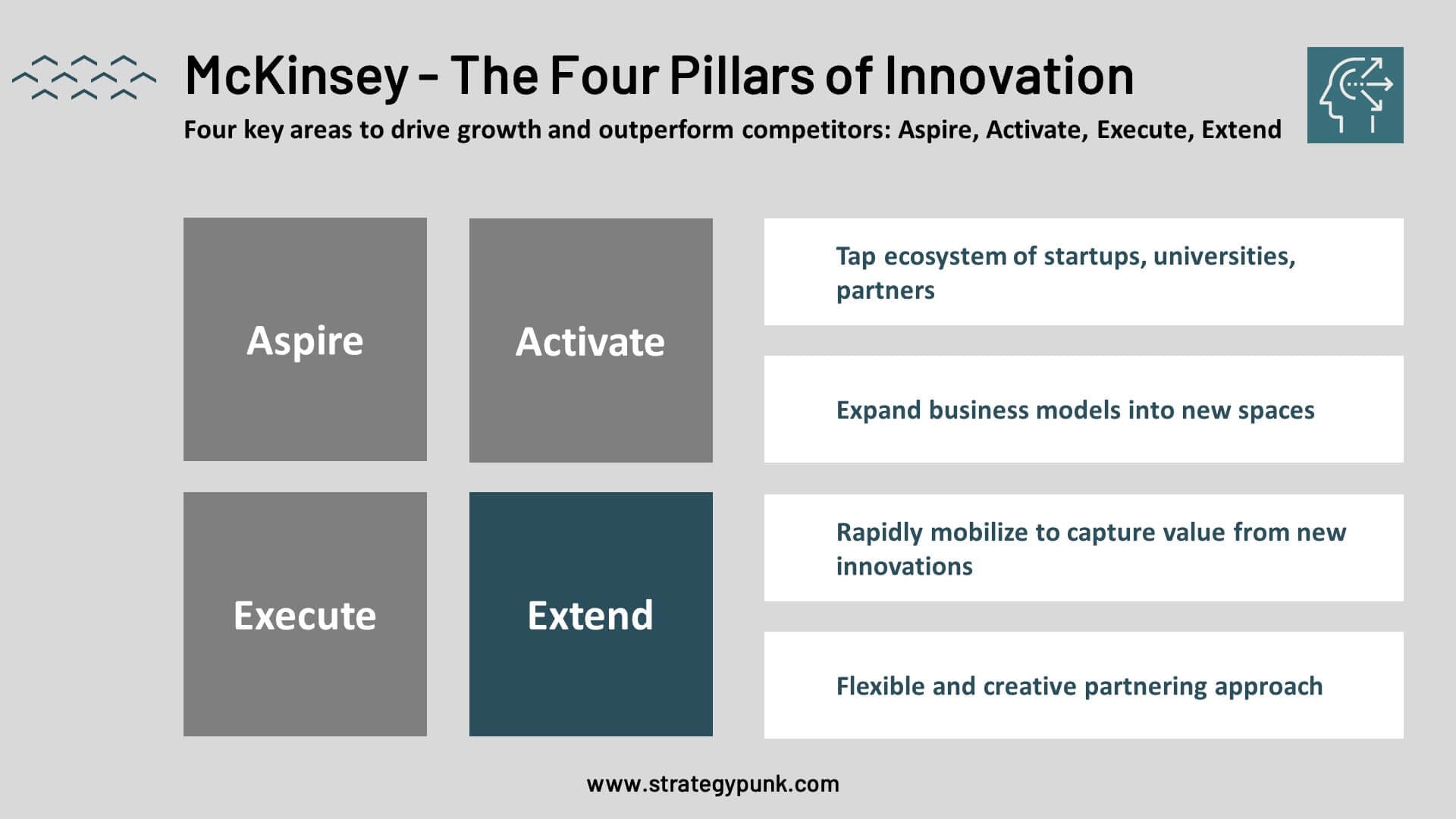
Extend
- Create external networks and tap ecosystem innovations
- Continuously expand business models to enter new spaces
- Mobilize quickly to capture value from innovations
By excelling across these four pillars, top innovators are pulling farther ahead of competitors.
Companies that aspire for innovation, activate growth pathways, execute excellently, and extend their reach will be best positioned to outperform.
McKinsey Four-Step Framework in Corporate Innovation: Free PDF and PowerPoint Template
Discover the secrets of business innovation with our free, editable McKinsey Four-Step Masterclass in Corporate Innovation template, available in PowerPoint and PDF formats.
This concise guide distills McKinsey's insights into four essential stages: aspire, Activate, Execute, and Extend. It provides a clear roadmap for transforming ambitious ideas into impactful business realities.
Download now to empower your journey from aspiring innovator to industry leader.
Four-Step Framework: Aspire, Activate, Execute, and Extend

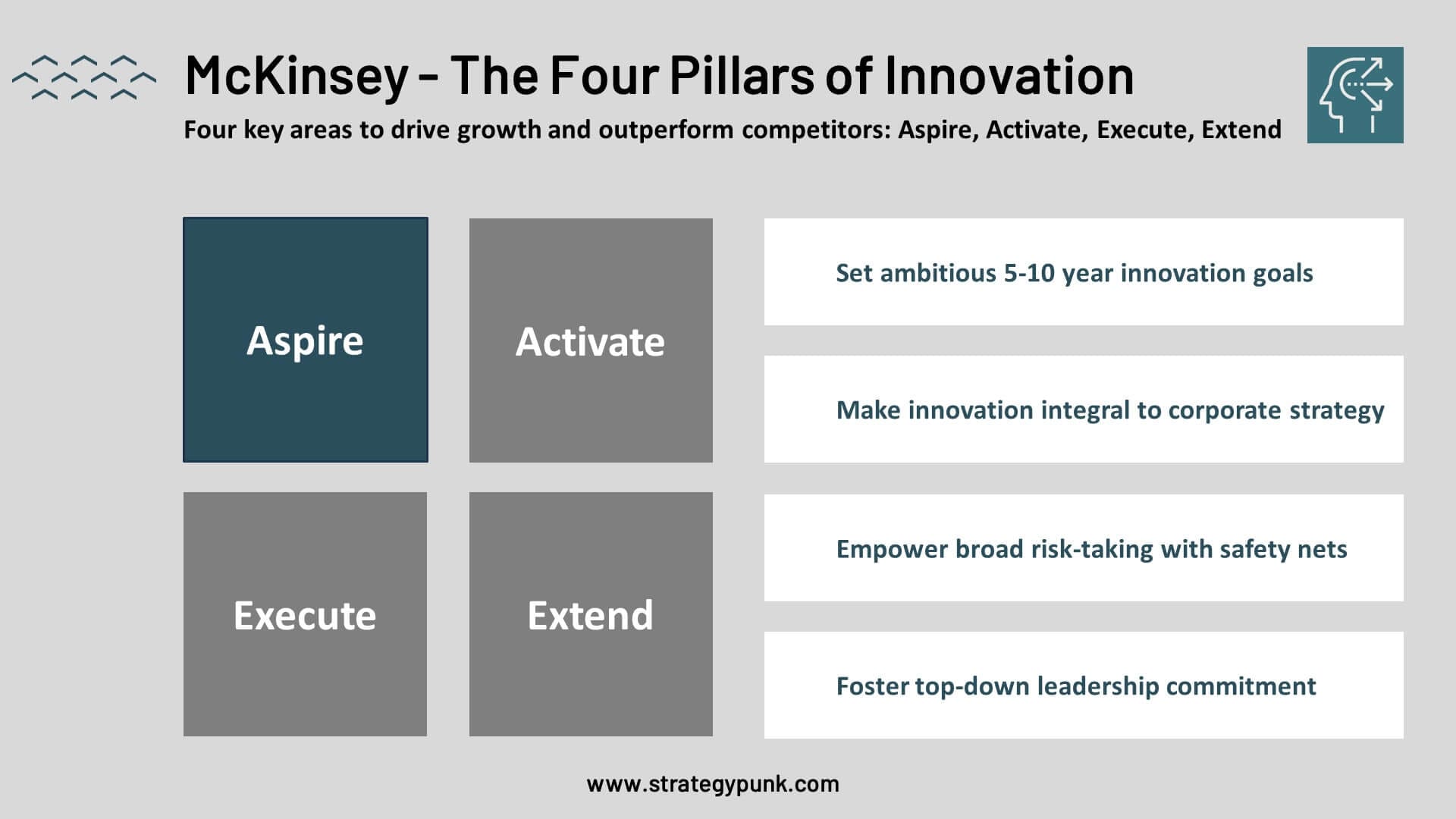


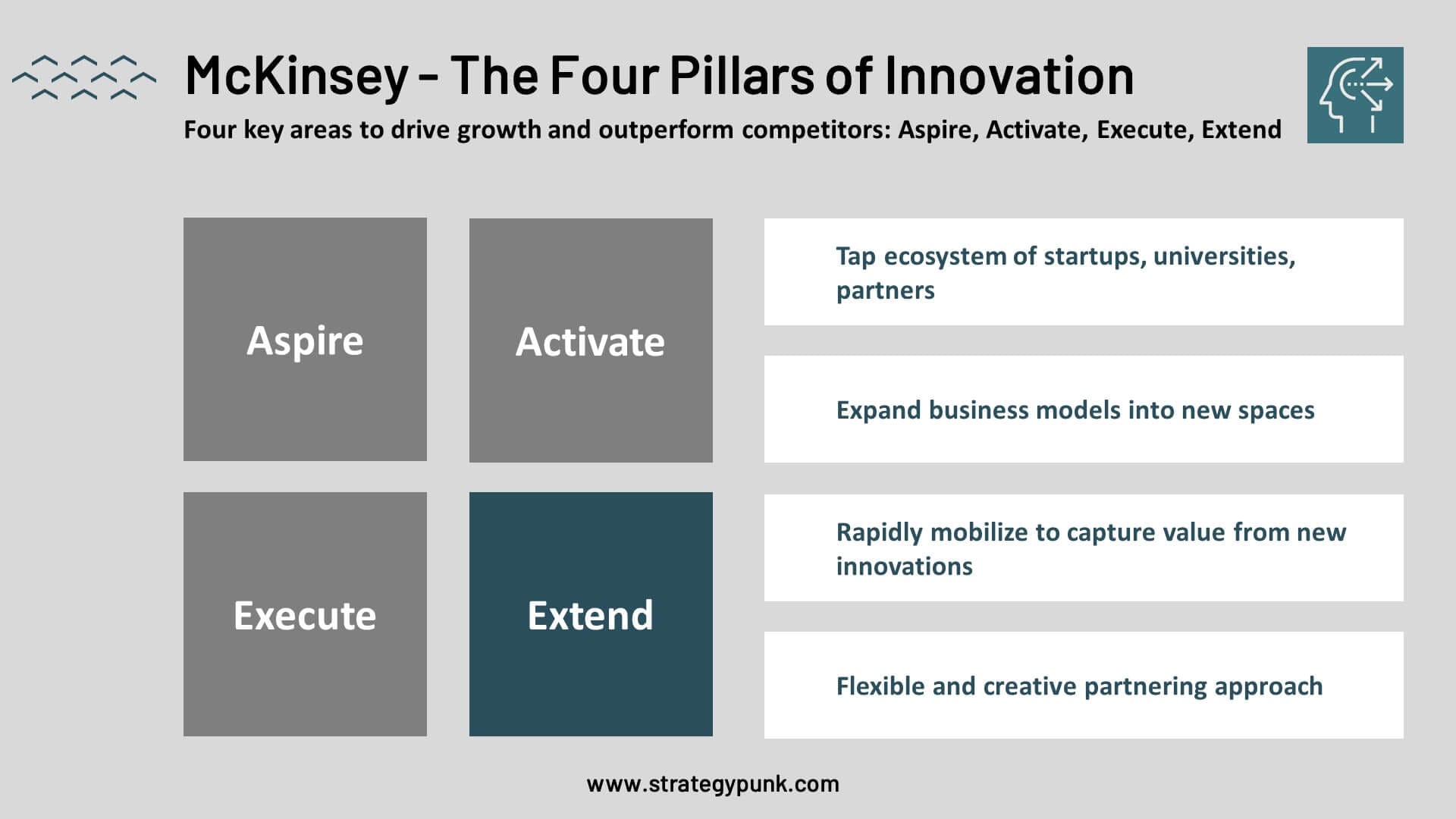
McKinsey Four-Step Framework in Corporate Innovation: Slide Deck


